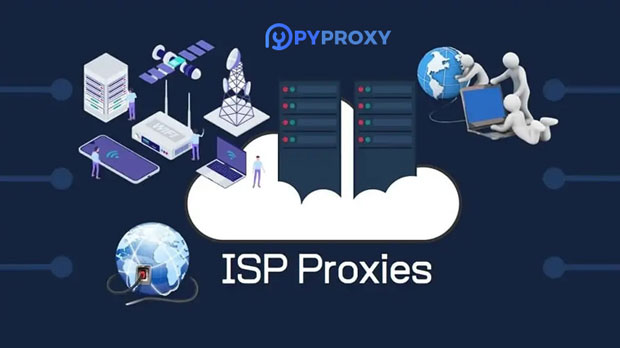When it comes to choosing between free and paid proxy services, understanding the differences can significantly impact your decision-making process. Proxy sites offer a way to hide your IP address, ensuring privacy and security while browsing the internet. While free versions may seem attractive due to their cost-free nature, they often come with limitations that may hinder the user experience. On the other hand, paid versions offer more robust features, improved security, and higher performance. This article explores the key differences between the free and paid versions of proxy services, providing a detailed comparison to help you make an informed choice. 1. Features: Free vs. Paid VersionsFree proxy services typically come with a limited set of features, which may be sufficient for light users but inadequate for those requiring enhanced functionality. The paid version, however, unlocks a host of advanced features that provide better performance, additional security, and more control over the proxy service.Free Version Features:- Limited Access: Free proxies usually have restrictions on the number of servers available for use. This means users might not have access to a wide range of locations, leading to slower speeds and potential security risks.- Basic Encryption: Encryption on free proxies is often basic and may not offer the same level of protection as paid proxies. This can expose users to risks, especially when dealing with sensitive information.- Limited Bandwidth: Free versions may impose data limits or slow down your connection after a certain amount of usage, which could be frustrating for users who need a reliable and fast connection.Paid Version Features:- Wide Range of Servers: Paid proxies typically offer access to a larger number of servers worldwide, allowing users to choose from more locations, ensuring faster and more stable connections.- Advanced Encryption: Premium services often provide stronger encryption methods, ensuring that users’ data remains secure while browsing. This is crucial for activities such as online banking, shopping, or accessing sensitive information.- Unlimited Bandwidth: Paid versions usually offer unlimited bandwidth, eliminating the data restrictions present in free versions. Users can browse the internet, stream content, and download large files without worrying about slowdowns or interruptions.2. Speed and PerformanceThe performance of a proxy service can significantly affect your browsing experience. Free proxies generally suffer from slow speeds due to overcrowded servers and limited resources.Free Version Speed:- Congested Servers: Free proxies often have a high number of users accessing the same servers, leading to congestion. This results in slower speeds, longer loading times, and poor performance.- Unreliable Connection: Since free proxies are not optimized for performance, users may experience frequent disconnects or unreliable connections, especially during peak usage hours.Paid Version Speed:- Optimized Servers: Paid proxies are designed to offer better performance by providing access to servers with lower user traffic. As a result, users experience faster speeds, more stable connections, and improved overall performance.- Priority Access: Premium users often enjoy priority access to faster servers, ensuring that their browsing or online activities are not hindered by traffic spikes or other disruptions.3. Security and PrivacyWhen it comes to proxy services, security and privacy are critical factors. Free proxies typically offer minimal protection, leaving users vulnerable to security threats and privacy breaches.Free Version Security:- Weak Encryption: As mentioned earlier, free proxies often provide basic encryption, which may not be sufficient to protect users’ data from cyber threats.- Potential Data Logging: Some free proxy services may log users’ browsing activities, compromising privacy. These logs can be sold to third parties or used for targeted advertising, undermining the very purpose of using a proxy.Paid Version Security:- Strong Encryption: Paid proxy services often employ advanced encryption protocols, such as SSL or HTTPS, to ensure users' data is securely transmitted and protected from cybercriminals.- No Data Logging: Many premium proxy providers have strict no-logs policies, meaning they do not store or track users’ online activities. This is a crucial aspect for users concerned with maintaining privacy and anonymity online.4. Customer SupportSupport is another important consideration when choosing a proxy service. While free proxy services may offer limited or no customer support, paid services often provide extensive customer service to ensure user satisfaction.Free Version Support:- Limited or No Support: Most free proxy providers do not offer dedicated customer support. Users may have to rely on online forums or community groups for troubleshooting, which can be time-consuming and frustrating.Paid Version Support:- 24/7 Customer Service: Paid proxy services typically provide around-the-clock support through various channels, including live chat, email, and phone support. This ensures that any issues are addressed promptly and efficiently.- Technical Assistance: Premium users often receive personalized technical support to resolve more complex issues, such as server connectivity problems or advanced configuration settings.5. Reliability and UptimeReliability is a critical aspect of any proxy service. Users expect their proxy to be available whenever they need it, without frequent outages or downtime. Free proxies are often less reliable due to lack of investment in infrastructure.Free Version Reliability:- Frequent Downtime: Free proxies are more likely to experience downtime, especially during peak usage hours. This can be frustrating for users who rely on their proxy for uninterrupted access to the internet.- Lack of Maintenance: Free proxy providers may not invest in maintaining or upgrading their services, leading to outdated software and reduced reliability.Paid Version Reliability:- High Uptime: Premium proxy services typically offer higher uptime, ensuring that users have continuous access to the internet without interruptions.- Regular Maintenance: Paid services invest in maintaining and upgrading their infrastructure, ensuring that the proxy service remains reliable and up-to-date.6. Cost ConsiderationsThe cost is one of the most obvious differences between free and paid proxies. While the free version has the clear advantage of being cost-free, the paid version comes with various pricing plans that offer different levels of service.Free Version Cost:- No Financial Commitment: The main appeal of free proxies is that they are free, making them an attractive option for users who only need basic proxy functionality.- Hidden Costs: Although there is no monetary charge, free proxies often come with hidden costs in terms of slower speeds, security risks, and limited functionality.Paid Version Cost:- Subscription Fees: Paid proxy services usually require a subscription fee, which can vary depending on the features and level of service provided. While this incurs an ongoing cost, users are generally paying for better performance, enhanced security, and greater reliability.- Value for Money: The cost of a paid proxy is justified by the advanced features, strong security, and reliable performance it offers, making it a worthwhile investment for users who require these benefits.ConclusionIn conclusion, while free proxy services may seem like an attractive option due to their cost-free nature, they come with several limitations that can affect the user experience. On the other hand, paid proxies offer a more secure, reliable, and feature-rich experience, making them the preferred choice for users who prioritize privacy, speed, and performance. When deciding between free and paid proxy services, users should carefully consider their needs and choose the option that best aligns with their requirements for internet browsing and online activities.
Jul 30, 2025



























































